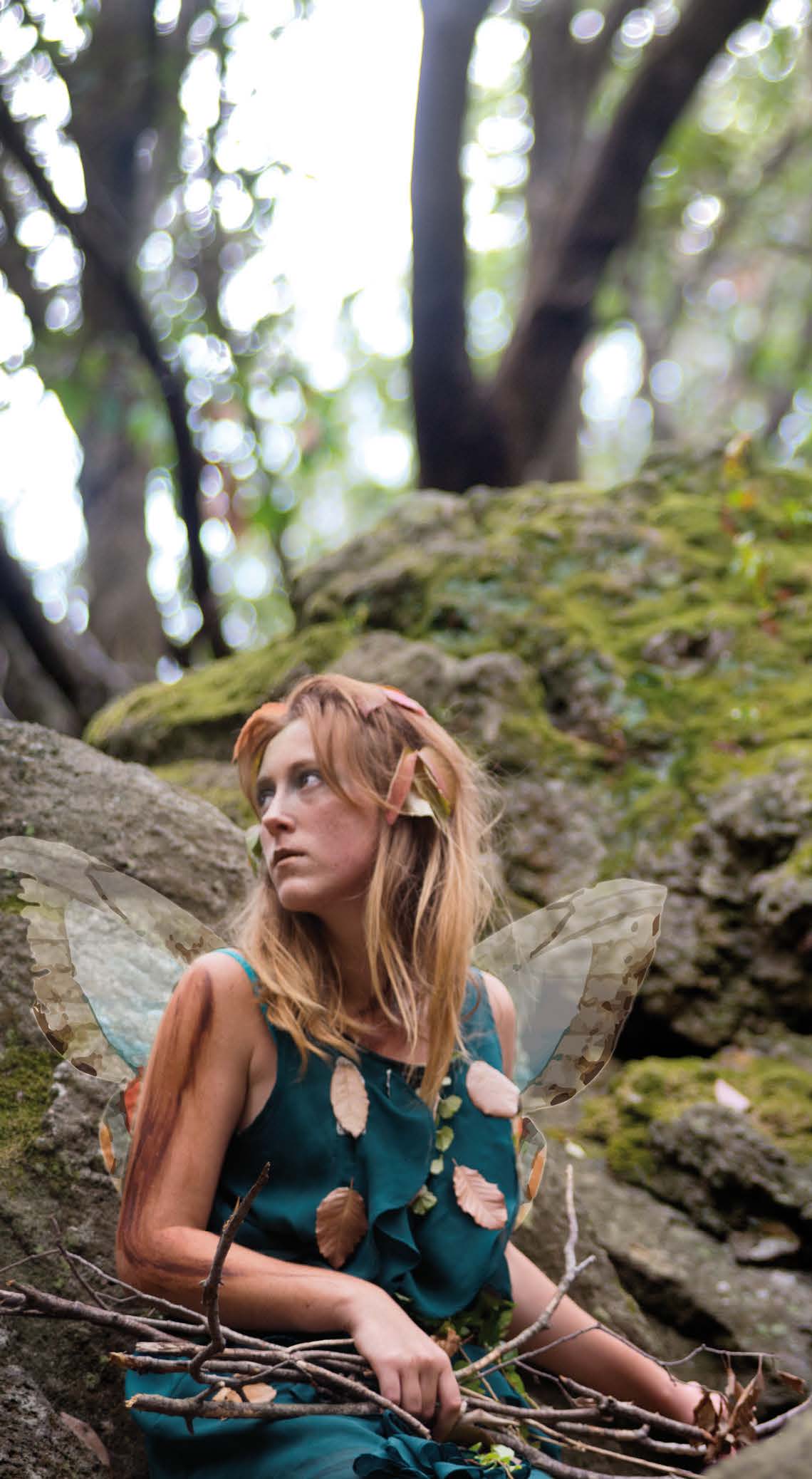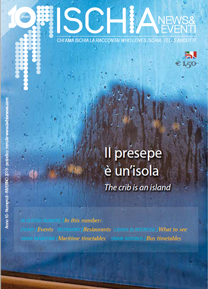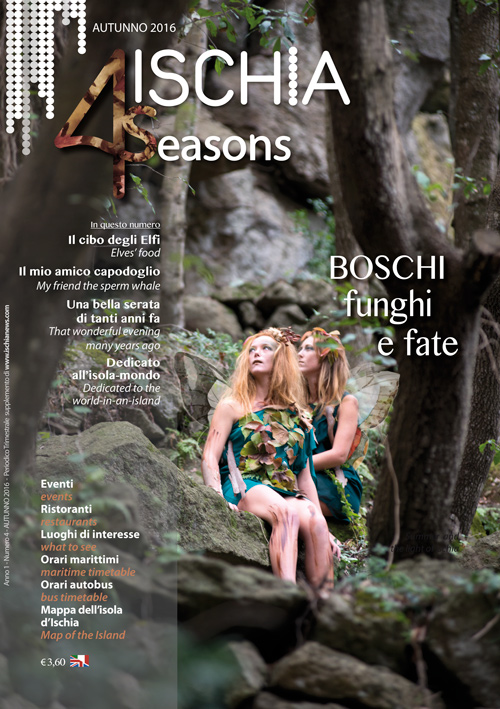Elve's food. Mushrooms, fairies and fantasies of autumn

Have you heard of the very secret research done in the woods of Ischia, not far from the groves of beans called bagpipers, including hardwood logs of oak and chestnut trees, even olive trees and the Ganoderma lucidum?
This is a non-edible mushroom quite rare for Ischia, although very well known for its medicinal and anti-inflammatory powers when reduced to powder tablets in China and Japan.
This mushroom associated to oak trees, trees of life, opens the doors for a digression which for me is relevant.
On 27th and 28th October 1995, I coordinated a mycological seminar which was entitled: “The food of the Elves: mushrooms to be recognized, woods to be lived.
” I began with a communication entitled: “Of elves, forests and ... hats. Notes about the magical world of mushrooms. “
My intention was that of creating an imaginative link between the island, where mushrooms sprout everywhere, having thousands of fans, and distant cultural dimensions.
Considering this internationally dressed Ischia, as having an undergrowth of overlapping narratives branching out and encroaching between reality and invention.
Wood Men
However to not defer from “my” mushrooms and elves, on the island, there are today many followers “in the flesh” as it were. Taking any of the paths now geo-referenced by Cai - the Italian Alpine Club section of Ischia assiduously working towards their realization - we meet some living specimens, confirming my consideration. The biped sylvan collects everything offered by the chestnut, even dry leaves which, until the late mid-twentieth century, were stuffed into sacks forming beds for people and donkeys: the woodsman has not disappeared.
An English visionary, Geoffrey Hodson, described the elves of the woods as “tiny and appear to be covered in a one piece leather suit, shining as if wet and the colour of the bark of a tree. Their hands and their feet are enormous and disproportionate to the rest of the body. Their legs are thin and straight, ears with the pointy end, also the nose is pointed and the mouth wide.” Popular traditions in Northern Europe are full of rich popular traditions and descriptions, animated by realms and worlds, magic and myths, beliefs that, together, form a distinct cosmogony of an unmistakable sign: Nature.
And so the Earth, the forest, the hills fibrillate with charming inhabitants, oscillating wildly between Good and Evil, usually known as the Little People. Fairies, ogres, elves, pixies, goblins, gnomes, trolls, dwarves, etc. Lights and shadows, mysteries and revelations, cross these borderless territories between reality and fantasy, having more and more distant offshoots going further south, further back in time, to this island, the Mediterranean, and Classical Greece, being “our homeland.”
A seething cauldron of surprises, containing mushrooms. There are many tales and folk songs, connecting both shadowy and sunny people at the same time, to mushrooms, in a swarm of syncretic forms. The fact that mushrooms appear and grow with extreme rapidity, has always fascinated the inhabitants of the planet: associating them to the supernatural was therefore natural. And what of their spooky and intriguing appearance, of colours sometimes phosphorescent, and that some which emanate fumes if crushed, and of those containing poisons? And of those bearing symbolic references to fertility or those with very little censored metaphors, relating to the sexual sphere? Association to gods, fairies, devils and the like, has been so constant.
If Robert Graves, the tutelary Professor of Greek myths, reminds us that the Amanita muscaria (the evil oval), containing toxic and hallucinogenic properties, could have been the true nectar and ambrosia of the Olympian gods, how can it be forgotten that, in the “heart” of Europe full of tales, we find St. Veit every June 15 riding in the woods on her blind horse sowing mushrooms?
Moreover, to allow consideration of the Graves theory, similar uses of mushrooms are attributed to peoples, very far apart from Siberia to Mexico, to Borneo.
Ah, the viking and the Fairies!
And then the Vikings gorged on evil-magic oval to unleash their incredible combatative fury, the Berserk, characterizing them, and making them fearsome beyond their rudimentary weapons and harnesses, bestowing a derived charm on them, with unchangeable success, as in the comics of “Superheroes” read by all.
According to Viking mythology, Woton was once chased by devils – recalled by Brian Froud and Alan Lee, in their fundamental study, Faeries , 1978 - and red scum droplets falling from the mouth of his galloping six-legged steed, are magically transformed into as many red mushrooms. In short, the oval evil was a real gift from the gods. And often was a taboo. So the Celts refused to touch any type of red mushrooms, neither any other foods of this colour, such as rowan berries, nuts, and so on. Attributing them as “stuff”, food of the gods.
Or elves’ food.
Substances extracted from Amanita generally cause in users, a significant form of agitation creating visions, as well as handed down to us via the epic on the road of American literature (Kerouac, Ginsberg, Corso, Ferlinghetti, Burroughs all users).
And those who claim to talk with invisible beings: fairies and elves. In short, a mushroom that is food, yet also admission to entrance gate, in the Fairy Kingdom. A magic seat, a hat. Or what else?
Fairies, in Nordic traditions, have claimed ownership of many mushrooms. A fact that is easily found in their English names, such as fairy yellow stick (yellow Ditola), Saddle Dryad, Pixie Shield of the dune, mushrooms of the fairy circle (Marasmius oreades), which marks the boundaries of locations where the fairies prefer to dance (and are very ancient circles: and it has been proved that some are more than 600 years old).
Again, the Fragile Elf Hat (although, elf hats are not worn as hats, because elves prefer a more elaborate style). In short, while not wanting to aspire to be mentioned in a Druid oracle, and retracing only suggestive memory, one could - for a moment - pretend to really become a forest dweller, to be fascinated by a close and inner perspective, perhaps in this way one could understand with what an exceptional biological treasure we are dealing with.
For what reason? To safeguard them with knowledge, on the example of this impregnated Nordic culture of ... “woodiness”, which for us seems a little lost, despite the strongly Nature oriented spirit of the Mediterranean. And also to recognize an imprimatur of freedom. By the way, the word “Gnome”, derived from the medieval Latin, Gnomus, combines to gnorìzo a greek verb. Gnorìzo, just look that, means “to know.” However, for some, gnomes have never existed, but, that is another story.
Meanwhile, ask the “mushroom man” of Ischia. More surprises are in store.
di Ciro Cenatiempo









